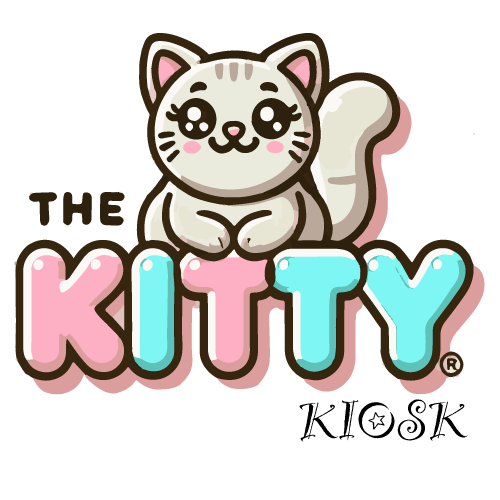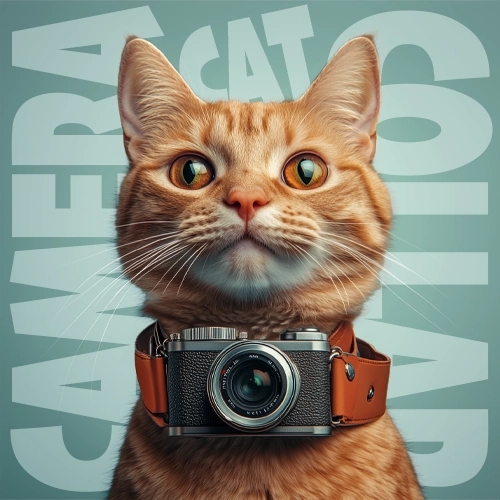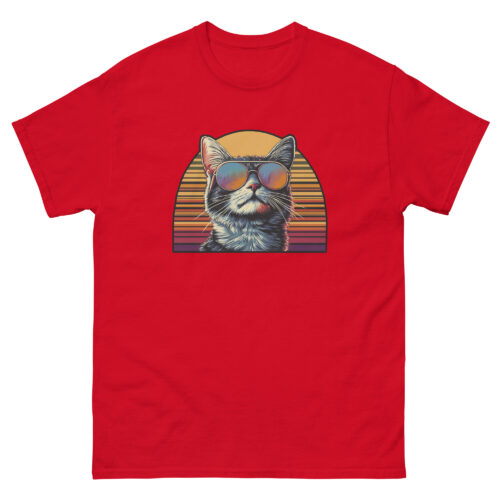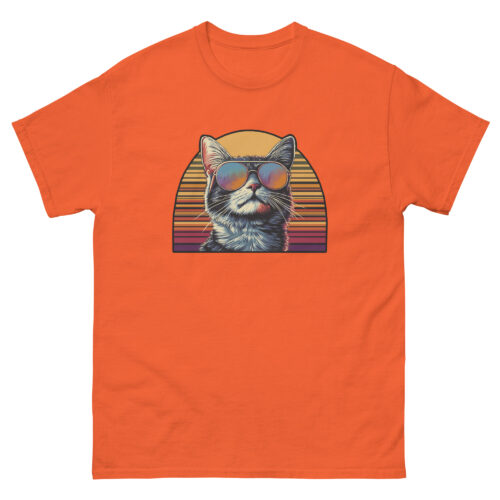
Bengal Cats: Wild Beauty Meets Domestic Charm
Table of Contents
Have you ever wished you could have a miniature leopard padding around your living room, looking exotic but acting like your best furry friend? Meet the Bengal cat – a stunning breed that combines the wild appearance of their Asian leopard cat ancestors with the loving personality of a domestic cat. With their distinctive spotted or marbled coats, athletic builds, and playful personalities, Bengals have captivated cat lovers looking for something a little different from the ordinary house cat.
The Fascinating Origin Story: From Wild to Mild
The Bengal’s journey from wild animal to beloved pet is one of the most interesting breed development stories in the feline world.
The first deliberate crossing of an Asian leopard cat (a small wild feline native to Asia) with a domestic cat occurred in 1963, when geneticist Jean Mill acquired a female Asian leopard cat named Malaysia. Mill bred Malaysia with a black domestic cat, and the resulting hybrid offspring became the foundation for what we now know as the Bengal breed.
However, the development wasn’t straightforward. Early generation crosses (called F1, F2, etc.) exhibited unpredictable temperaments that often retained too much wild behavior to make good pets. It took several generations of careful breeding to create cats that maintained the wild appearance while developing the temperament suitable for family companions.
| Generation | Description | Typically Kept As |
|---|---|---|
| F1 | 50% Asian leopard cat | Often too wild for pets |
| F2 | 25% Asian leopard cat | May have wild tendencies |
| F3 | 12.5% Asian leopard cat | More domesticated |
| F4 | 6.25% Asian leopard cat | Considered fully domestic |
Today’s pet Bengals are at least four generations removed from their wild ancestors, which gives them their domestic temperament while preserving their exotic looks. The breed received championship status from The International Cat Association (TICA) in 1991, cementing its place in the cat fancy world.
Those Amazing Coats: Nature’s Masterpiece
The Bengal’s coat is undoubtedly its most distinctive feature – a living canvas of nature’s artistry that draws admiring glances wherever these cats go.
Patterns That Pop
Bengals come in two main patterns:
Spotted: The classic Bengal look features spots that can be large or small, round or oval, even arrow-shaped or rosettes (spots within spots, similar to a jaguar’s coat). Each cat’s pattern is unique – like a fingerprint!
Marbled: This pattern features swirling, flowing patterns reminiscent of marble cake, created by horizontal stripes that have been manipulated through selective breeding to form this distinctive look.
A Rainbow of Colors
While the brown spotted tabby is the most recognizable Bengal, the breed actually comes in several color variations:
- Brown: The classic Bengal with black or dark brown markings on a golden, copper, or light brown background
- Silver: Black or dark gray markings on a silver-white background
- Snow: Comes in three variations: seal lynx point, seal mink, and seal sepia – all variations of a lighter-colored Bengal
- Charcoal: A dramatic variation with very dark markings against the background color
- Blue: Dilute coloration with blue-gray markings instead of black
The Glitter Effect
Some Bengals possess a special gene that gives their coat a sparkly appearance, as if it’s been dusted with gold. This trait, known as “glitter,” makes their coats shimmer in the sunlight and adds another dimension of visual appeal to these already stunning cats.
Built for Action: The Bengal Body Type
Bengals aren’t just pretty faces – they’re athletes to their core. Their physical characteristics reflect their wild heritage and active nature:
- Medium to large size: Males typically weigh 10-15 pounds, with females slightly smaller at 8-12 pounds
- Long, muscular body: Powerful and agile, built for jumping and climbing
- Hind legs slightly longer than front legs: Gives them an athletic stance and amazing jumping ability
- Relatively small, rounded head: With high cheekbones and prominent whisker pads
- Medium-sized ears: Set wide with rounded tips
- Large, oval eyes: Usually green or gold, adding to their wild appearance
- Long, thick tail: Usually with dark rings and a black tip
This combination of features creates a cat that moves with grace and power, capable of impressive physical feats that would make most domestic cats envious.
Personality Plus: What It’s Like to Live With a Bengal
If you’re considering adding a Bengal to your family, be prepared for a cat that’s anything but ordinary. These are not your typical lap cats content to sleep 18 hours a day!
Energy to Spare
Bengals remain playful and kitten-like well into adulthood. They’re highly active and require substantial daily exercise and mental stimulation. Without proper outlets for their energy, they may create their own entertainment – which might not align with your ideas of appropriate home decor preservation!
Ideal Bengal playtime activities include:
- Interactive toys that challenge their hunting instincts
- Puzzle feeders to engage their intelligence
- Cat wheels for aerobic exercise
- Climbing trees and shelves to satisfy their love of heights
- Fetching toys (yes, many Bengals play fetch!)
Smart as a Whip
Bengals are among the most intelligent cat breeds, capable of learning tricks, opening doors, solving puzzles, and even walking on a leash. This intelligence means they’re trainable but also that they’ll find ways around rules you try to establish if they’re determined enough.
Many Bengal owners report that their cats learn to turn on light switches, turn on water faucets, or open cabinet doors with ease. Some have even figured out how to flush toilets repeatedly – usually in the middle of the night when it makes the most dramatic impact on their humans’ sleep!
Water Lovers
Unlike many cats who avoid water at all costs, Bengals often have a fascination with it. This trait likely comes from their Asian leopard cat ancestors, who are strong swimmers.
Don’t be surprised if your Bengal:
- Joins you in the shower
- Plays in sinks with running water
- Drops toys in water bowls
- Splashes in water fountains
- Tries to go swimming if given the opportunity
Many Bengal owners provide shallow water dishes or cat fountains to satisfy this natural interest in a controlled way.
Talkative and Expressive
Bengals have plenty to say and aren’t shy about communicating their thoughts. They have a distinctive voice that’s often described as similar to a cooing sound rather than a traditional meow. They’ll “talk” to their humans about everything from dinner being late to the fascinating bird they just spotted through the window.
Social Butterflies
Despite their wild appearance, Bengals are typically affectionate cats who form strong bonds with their humans. They often follow their people from room to room, want to be involved in all activities, and may sleep beside you (though they’re less likely to be lap cats due to their active nature).
They generally get along well with other pets when properly introduced and are good with children who understand how to interact respectfully with cats. Their playful nature makes them excellent companions for active households.
Caring for Your Bengal: What They Need to Thrive
Environmental Enrichment
Bengals need an enriched environment that provides outlets for their physical abilities and intelligence:
Vertical space: Tall cat trees, wall shelves, and perches help satisfy their natural desire to climb and survey their territory from above.
Interactive play: Daily play sessions with wand toys, laser pointers, or other interactive toys help burn energy and strengthen your bond.
Puzzle toys: Food puzzles and treat-dispensing toys engage their problem-solving abilities and make mealtime more interesting.
Companionship: Bengals don’t do well when left alone for long periods. Consider having another pet for company if your household schedule means the cat would otherwise be alone for many hours each day.
Grooming Made Easy
Despite their luxurious appearance, Bengals are surprisingly low-maintenance in the grooming department. Their short, pelt-like coat doesn’t mat or tangle and requires minimal care:
- Weekly brushing removes loose hair and distributes natural oils
- Bath only when necessary (though many Bengals don’t mind baths)
- Regular nail trimming and dental care as with any cat
During shedding season, you might want to increase brushing to twice weekly, but overall, Bengals shed less than many other breeds.
Diet: Fueling the Bengal Engine
Bengals are active cats with high metabolisms who need quality nutrition to maintain their health and energy levels. Many Bengal owners find that these athletic cats do best on:
- High-protein diets that reflect their carnivorous nature
- Grain-free formulations (some are sensitive to grains)
- A mix of wet and dry food for proper hydration
- Fresh meat treats occasionally (many Bengals love raw or cooked meat pieces)
Due to their activity level, obesity is less common in Bengals than in more sedentary breeds, but portion control is still important, especially as they age and may become less active.
Health Watch: Keeping Your Bengal in Top Form
Bengals are generally healthy cats with a life expectancy of 12-16 years, but like all breeds, they have some health considerations to watch for:
Hypertrophic Cardiomyopathy (HCM): A form of heart disease that can affect Bengals. Responsible breeders screen their cats for this condition.
Progressive Retinal Atrophy (PRA): A genetic eye disorder that can lead to blindness. Genetic testing can identify carriers.
Pyruvate Kinase Deficiency (PK Deficiency): A genetic blood disorder that can be identified through testing.
Flat-chested Kitten Syndrome: A condition that can affect Bengal kittens but is usually outgrown by adulthood.
When acquiring a Bengal kitten, ask the breeder about testing for these conditions. Regular veterinary check-ups are essential for catching any health issues early.
Is a Bengal Right for You? The Honest Assessment
Bengals are magnificent cats, but they’re not for everyone. Before falling in love with their wild beauty, consider whether your lifestyle and home environment can meet their specific needs:
You might be a perfect Bengal owner if:
- You want an active, engaging cat who will be involved in your daily life
- You’re home often enough to provide company and interaction
- You enjoy interactive play and training sessions with your pet
- You can provide plenty of climbing opportunities and enrichment
- You find intelligence and problem-solving in a pet charming rather than frustrating
- You don’t mind some noise (they can be quite vocal)
- You have the time and resources for a high-energy pet
A Bengal might not be your ideal match if:
- You want a calm, quiet cat who’s content to lounge all day
- You’re away from home for long periods regularly
- You prefer a traditional lap cat who loves to snuggle for hours
- You’re very particular about keeping everything in perfect order
- You live in a small space without room for cat furniture
- You want a low-maintenance pet that needs minimal interaction
Still not sure? Try our fun interactive quiz below to find out if a Bengal cat is right for you.
Are You Ready for a Bengal Cat?
Take this quick quiz to see if a Bengal might be right for your home!
1. How would you describe your activity level at home?
2. How much time can you dedicate to playing with your cat daily?
3. Do you have vertical space in your home for cat climbing?
4. How do you feel about cats that vocalize regularly?
5. Are you prepared for a cat that might get into everything?
Finding Your Bengal: The Right Way
If you’ve decided a Bengal is the perfect addition to your family, please consider these guidelines for bringing one home:
Work with reputable breeders who:
- Health test their breeding cats
- Socialize kittens properly
- Provide health guarantees
- Allow you to visit their cattery
- Ask you questions to ensure a good match
Consider adoption: Bengal-specific rescues exist, as many people acquire these beautiful cats without understanding their needs, then find themselves unable to provide appropriate care. Adult Bengals from rescue organizations can make wonderful pets and may already have some training.
Be prepared for the investment: Quality Bengal kittens from reputable breeders typically cost $1,500-3,000 or more, depending on color, pattern, and quality. This higher price reflects the care that goes into proper breeding programs.
Living the Bengal Life: What to Expect
Once you welcome a Bengal into your home, life will never be boring again! Here’s what new Bengal owners often discover:
- Your vocabulary will expand to include phrases like “Get down from there!” and “How did you even get up there?”
- Water glasses must be kept covered or emptied to prevent impromptu paw dipping
- Doors, cabinets, and drawers may need child-proof locks
- Guests will be amazed by your cat’s unusual appearance and dog-like behaviors
- You’ll become adept at finding inventive ways to provide enrichment
- Your photo gallery will fill with pictures trying to capture that perfect spotted coat
Bengals challenge us to be better pet owners – to learn about their needs, provide appropriate environments, and engage with them in meaningful ways. In return, they give us the joy of living with a magnificent animal that bridges the gap between wild and domestic, bringing a touch of the jungle into our everyday lives.
The Wild Side of Your Heart
There’s something special about sharing your home with a Bengal cat. Perhaps it’s the whisper of wilderness in their spotted coat, or the ancient wild gleam in their eyes when they focus on a toy. Maybe it’s the way they seem more like a companion than a pet, engaging with you as an equal in your daily activities rather than just passing by for the occasional pet.
Whatever that special quality is, Bengal owners know it’s worth the extra effort these cats require. They stretch us, surprise us, and remind us daily that our domestic cats still carry the spirit of their wild ancestors – and perhaps help us connect with something wild within ourselves, too.
Are you living with a Bengal beauty, or dreaming of adding one to your family? Share your experiences or questions in the comments below!
Loved this post? Explore more helpful cat care tips on our cat blog and join our community of cat lovers to share stories and advice!
Disclosure: This post contains affiliate links. If you purchase through these links, we may earn a commission at no extra cost to you.







